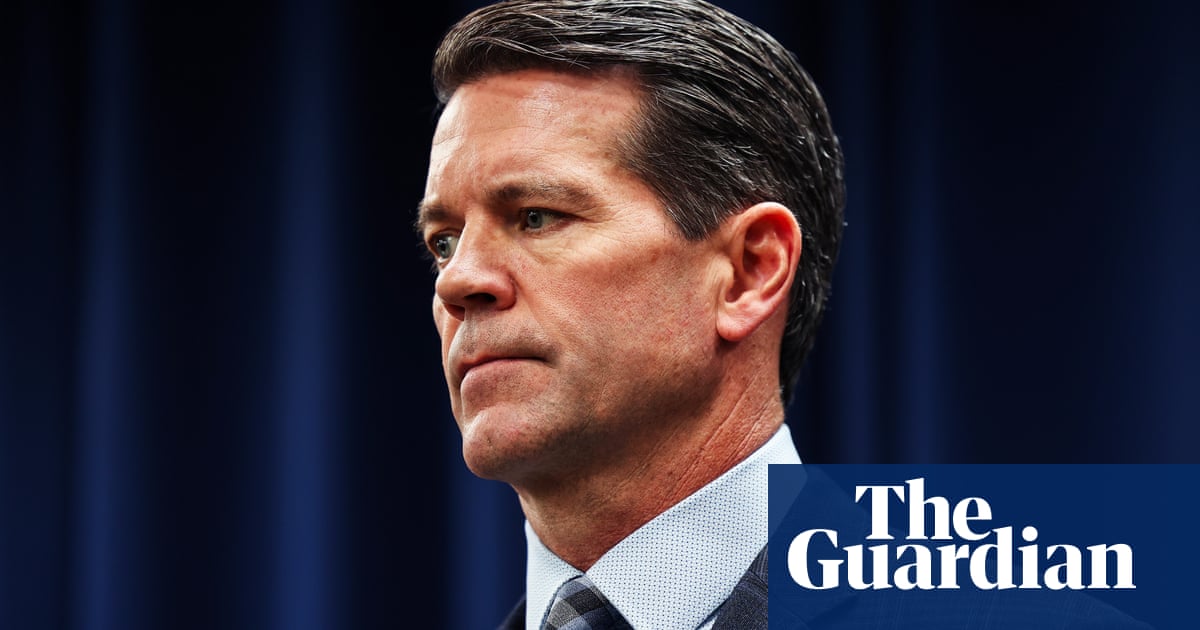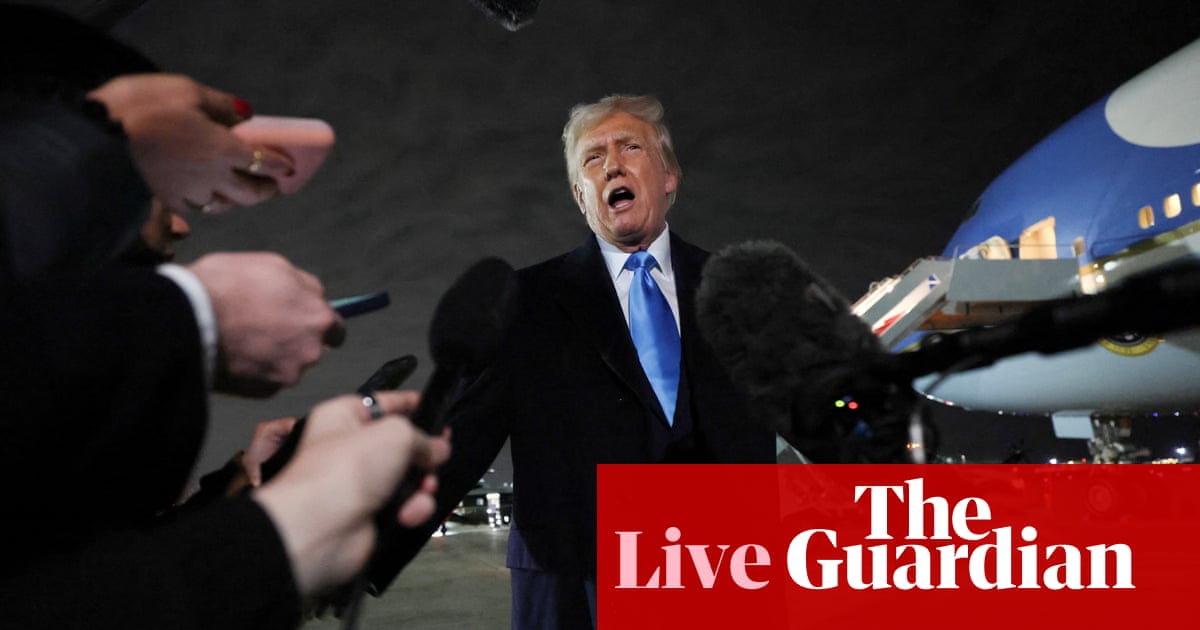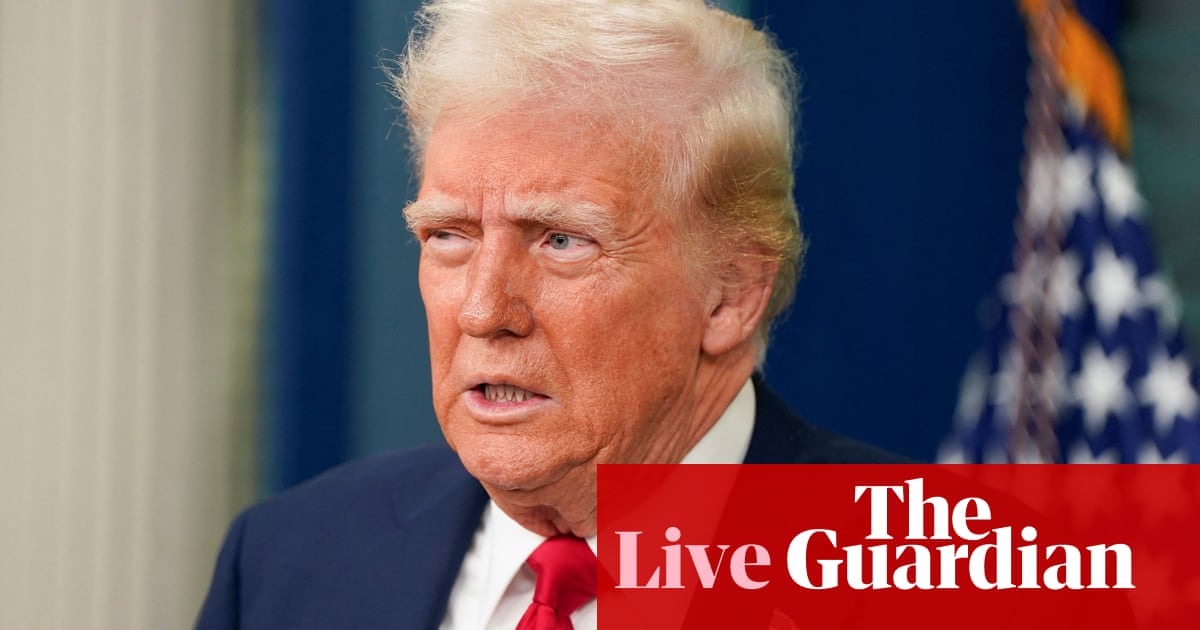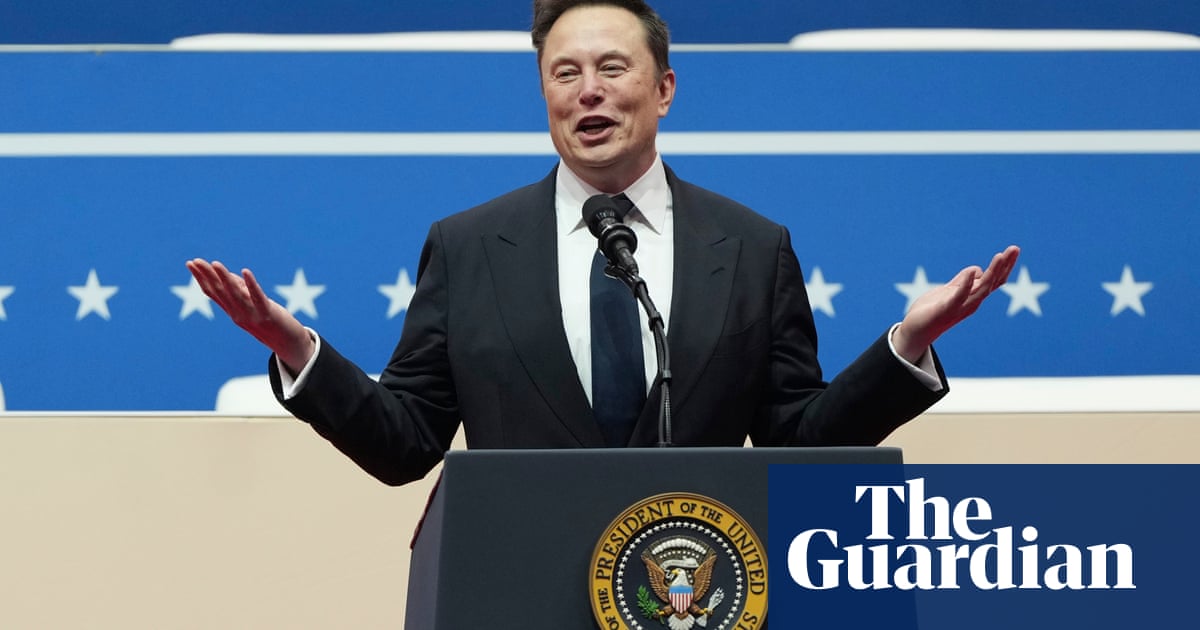For several years, Republicans accused Joe Biden of waging a “war on energy” even as the Untied States drilled more oil and gas than at any time in its history. Now, a more tangible assault is gathering pace under Donald Trump – aimed squarely at wind, solar and other cleaner forms of power.
In the first two weeks of his return as president, Trump has, like his first term, issued orders to open up more American land and waters for fossil fuel extraction and started the process to yank the US from the Paris climate agreement. “We will drill, baby drill,” said Trump, who has promised to cut energy and electricity prices in half within 18 months.
But Trump has this time also launched a blitzkrieg against renewable energy, with his department of interior temporarily suspending all clean energy development – but tellingly not oil and gas – on federal land.
Meanwhile an “energy emergency” declared by Trump mentions the need to bolster “crude oil, natural gas, lease condensates, natural gas liquids, refined petroleum products, uranium, coal” but not solar, wind or other clean energy technologies. Trump has said he would like to see “good clean coal”, the dirtiest of fossil fuels, meet the rising electricity demand from AI generation.
Trump has long disparaged wind energy, calling it “disgusting” and baselessly alleging turbines are the primary cause of whale and bird deaths, and his administration has now halted all federal approvals of onshore and offshore wind.
“We don’t want windmills in this country,” the president recently told Fox News. “The wind blows and then it doesn’t blow, the things cost a fortune, they are made in China, they kill the birds, they’re horrible.”
He then expanded his attack to solar, the fastest-growing energy source in the US. “You know what people also don’t like, those massive solar fields built over land that cover 10 miles by 10 miles,” Trump said. “I mean they are ridiculous, the whole thing.”
Smaller-scale solar projects are also being suspended, with the new administration freezing $7bn in funding already awarded for community and rooftop solar in low-income communities.
This broad-fronted promotion of fossil fuels – the Trump administration has also started to reverse pollution standards for cars that encourage more electric sales, lifted a pause on gas exports and even floated the revival of the moribund Keystone XL oil pipeline – has delighted an industry that donated heavily to the president’s campaign.
“This is a new day for American energy,” said Mike Sommers, president of the American Petroleum Institute. “We applaud president Trump for moving swiftly to chart a new path where US oil and natural gas are embraced, not restricted.”
But clean energy developers and climate advocates have been left stunned by the sharp turn against renewables. “From day one, Trump’s priority has been rewarding his corrupt fossil fuel donors and sabotaging America’s clean energy future,” said Sheldon Whitehouse, a Democratic senator.
A White House spokeswoman did not answer questions as to the absence of renewables in this vision, instead pointing to a focus on “reversing the harmful and shortsighted policies of the previous administration”.
The last Trump administration similarly sought to champion fossil fuels but now there’s the “aggressive use of every imaginable presidential power” to favor them over renewables, according to Barry Rabe, an environmental policy expert at the University of Michigan.
“Renewables largely just get in the way of these goals, the president sees no advantage in pursuing them,” said Rabe. “The rhetoric around wind energy isn’t new but it’s now particularly embittered. It’s really ratcheted up.”
Rabe said the vast support for clean energy in the Inflation Reduction Act (IRA), passed under Biden, “provides targets” that weren’t previously there for Trump to aim at. The president has called the bill “a giant scam” and has already paused its spending that aids renewables, electric cars and batteries produced in the US.
Renewable sources of power, including nuclear, generated a quarter of US electricity in 2024, a significant leap from when Trump was last in power. Wind and solar surpassed coal for the first time last year and are expected to dominate freshly-added capacity throughout 2025, with hundreds of thousands of new jobs turbocharged by the IRA’s tax credits.
However, the US still lags other countries, most notably in Europe and China, in deploying the renewables needed to avert the worst impacts of global heating and lessen the thousands of deaths and illnesses from fossil fuel air pollution. Analysts warn that political uncertainty risks undermining the required clean energy roll-out and that any removal of the tax credits would severely dampen growth.
“This is all driven by culture war politics – Trump is attempting to strangle the US clean energy miracle in its crib so he can create a boogyman and be on top of a political moment,” said Paul Bledsoe, who was climate advisor to Bill Clinton’s White House.
“It’s illogical because it destroys working class jobs and allows China to eat America’s lunch on clean energy. But as long as it meets his culture war objectives he indulges it.”
Bledsoe said there will be “ferocious” lobbying in Washington over how much of the IRA to dismember, with Republicans faced with the choice of backing Trump or the clean energy investments overwhelmingly flowing to their, rather than Democratic, districts. The four leading states for wind energy generation – Texas, Iowa, Oklahoma and Kansas – are also conservative bastions.
“Oil and gas production will be driven by market circumstances but the real question is whether Congress will listen to this bullshit on renewables,” Bledsoe said. “Republican members know clean energy is a huge success story and the question is whether they will fall in line and repeal incentives because of this culture war. That is the crux of it and it’s unclear what will happen.”
For now, the beleaguered clean energy industry has been left to plead its case in Trumpian terms, arguing that Republican calls for “energy dominance” and an “all of the above” energy strategy can’t be achieved while cutting out renewables.
“No nation can achieve energy dominance absent consistent policy that moves beyond the idea that energy systems have partisan character,” said Jason Grumet, chief executive of American Clean Power, a trade lobby group.

 German (DE)
German (DE)  English (US)
English (US)  Spanish (ES)
Spanish (ES)  French (FR)
French (FR)  Hindi (IN)
Hindi (IN)  Italian (IT)
Italian (IT)  Russian (RU)
Russian (RU) 























Comments